Dive deeper
Into this technology



It started in the sixties
In the 1960s, people began to reject behaviorism (which mainly studied behavior), shifting focus to mental processes like memory, attention, and language — all linked to brain functions
Neurofeedback began in the 1960s, when Joe Kamiya discovered the ability to influence brainwaves through biofeedback in 1962. In the 1970s, Barry Sterman expanded on this research, demonstrating its therapeutic benefits, especially for epilepsy. Sterman’s groundbreaking work began with an experiment on cats 😉
Sterman’s experiments on cats showed that brainwave training reduced seizures. He later used the technique to help astronauts perform better under stress



The mind is the result of billions of chemical reactions
You get real-time feedback on your brainwave patterns
A workout for your brain
When you train with neurofeedback, you’re teaching your brain to work more efficiently. The brain has electrical activity, which is measured in brainwaves. These brainwaves control how we feel, think, and behave.
Sometimes, our brainwaves can get “out of balance” — for example, too much of one type of wave and not enough of another — which can lead to issues like stress, anxiety, or difficulty focusing.
Neurofeedback helps by giving you real-time feedback on your brainwave patterns. Through sensors on your scalp, it tracks your brain’s activity and shows you when your brain is making the right kind of waves for the task at hand.
For example, when your brain is calm and focused, you get positive feedback.
Over time, your brain learns to stay in these more balanced patterns, which can improve things like mood, concentration, and overall mental well-being.
In short, neurofeedback is like a workout for your brain. It helps you “train” your brain to be more balanced and efficient, leading to better mental and emotional health.
.
An explanation in two way's:
Explanation with a metaphor
The clinical explanation
Your brain
Your brain is constantly processing everything you experience. When life gets busy and overwhelming, your brain may struggle to process everything efficiently. This creates a “traffic jam” in your mind: unfinished tasks and unresolved emotions waiting to be processed. Think of it like a suitcase full of unprocessed experiences, piling up in your brain, waiting to be unpacked. The more “suitcases” left unpacked, the greater the impact on your mood and performance.
If it's not working the way you want
With neurofeedback, you can see in real-time where your extra baggage is piling up in your brain and how well that area is functioning. While you can’t directly see what’s inside your “suitcase,” you can identify that it’s there, waiting to be unpacked. What’s interesting is that you can also pinpoint exactly where the “suitcase” is located in your brain. This gives you valuable insight into your challenges and the areas where you’re seeking improvement.
What Happens During Training
By scanning and monitoring your brain activity, you get immediate insight into how your brain is functioning. If there’s too much activity in a certain area, it indicates that there are “suitcases” in that part of the brain still waiting to be unpacked. This shows that the brain is working overtime but is unable to process everything efficiently. On the other hand, if there’s too little activity in a specific area, this can also be corrected
Just Like Your Abs, You Can Train Your Brain
With neurofeedback, you train your brain in a relaxed way: during a session, you watch a movie of your choice. When your brain becomes overloaded, it shows up on the screen. Your task is to calm down and regain balance, and we’re here to help you with that. The result of calming down is visible on the screen. By repeating this process, your brain activity adjusts, gradually bringing your brain into balance. You’ll notice the improvements in many areas of your life
How Does It Work Technically?
This process is based on neuroplasticity: the brain’s ability to adapt and reorganize. Through repeated training, you learn to regulate specific brainwaves and receive positive feedback. This helps your brain function more efficiently, making it easier for you to regulate your thoughts, emotions, and behavior.
We regulate the brain
Neurofeedback is a biofeedback technique that focuses on regulating brain activity through real-time feedback. The process uses electroencephalography (EEG) to measure brainwaves and provides this information back to the user in the form of visual or auditory signals.
The feedback varies depending on the training goal: for example, increasing slow waves (such as theta or alpha waves) for relaxation, or increasing fast waves (such as beta waves) for improved concentration and focus.
The Mechanism is neuroplasticity
The underlying mechanism is neuroplasticity: the brain’s ability to adapt and reorganize. Through repeated exposure to positive feedback for specific brain patterns, the brain can adjust its activity in such a way that desired behaviors (such as increased focus or reduced anxiety) are promoted. This occurs through operant conditioning, where the user learns to regulate certain brainwaves to receive positive feedback, leading to more adaptive and efficient brain activity.
The Mechanism is neuroplasticity
A typical neurofeedback session usually lasts between 30 to 45 minutes. The first session may take a bit longer, around 60 to 90 minutes, as there’s an initial assessment and setup involved. Follow-up sessions typically take less time, as your brain’s training progresses. The exact duration may vary depending on your specific needs and goals.
Do you wear contact lenses? Bring your glasses
Individual Variability
- Severity of Symptoms: More severe or long-standing issues may require more sessions to see noticeable improvements.
- Brain Response: Some people respond more quickly to neurofeedback, while others may require more sessions to achieve the desired balance.
- Consistency: Regular and consistent sessions lead to better outcomes, so sticking to a schedule is important for effectiveness.
Turn off your phone
A phone can interfere with the electrical signals of the neurofeedback software and hardware. Please turn off Wi-Fi and mute the sound
